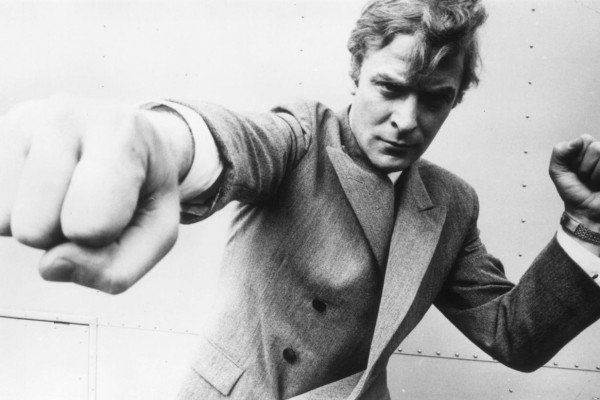For thousands of years, the nomadic herders of the Khangai Mountains have stewarded the land home to the Khangai yak. These semi-wild indigenous species roam the rugged grassland steppes of the remote far reaches of Mongolia. Its intense wild landscapes are capped by glacier-tipped mountains, separated by green river valleys and shadowed by soaring peaks. So how do the noble fibres of these ancient animals make it from East to West? How did this noble fibre become so incredibly coveted by Savile Row and a legion of tailors and fashion houses? We speak to Nancy Johnston, Tengri’s founder, about how she created a company designed to be one of the world’s leading sustainable business solutions.
READ THE FEATURE HERE IN THE ALPINE EDITION
Let’s start at the top. You’re born and raised in the concrete jungle of LA, what inspired you to work in the non-profit arena?
I was the first in my family born outside Asia as a result of the Vietnam war. My family, Chinese in descent, made roots in LA where we lived in a pretty tough neighbourhood. As part of a minority family in the wrong end of town I absorbed and experienced the juxtaposition of Hollywood life. During these formative years I sought to understand more – I wanted solutions to create a better world. Rather than be hardened as a victim of circumstance, or to grow up with anger and hate in my heart, I chose to be soft and seek to understand and exercise compassion. I studied social work and wanted to help people and communities improve their circumstances and situations. Social contribution has always been my guiding compass to most of my decisions in employment and the experiences I’ve had.
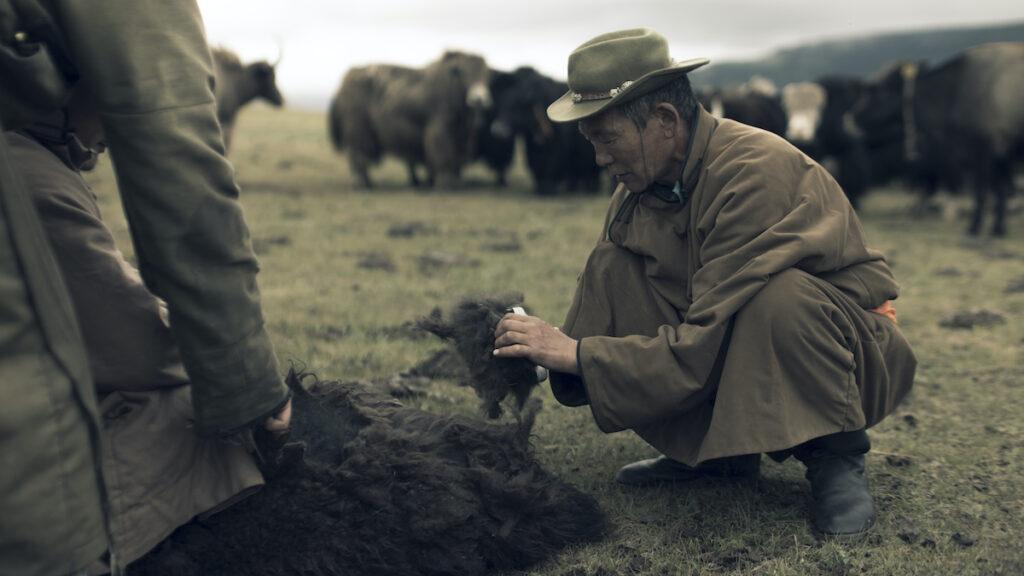
Growing up in LA, home to glorious sunsets and skylines, there were droughts, wildfires and days where I couldn’t see the mountains on the horizon for smog. Despite being raised in a concrete and cosmopolitan city, I had an acute awareness of the environmental effects of our daily lifestyle choices from a young age. The Californian droughts fostered a fascination with water, plants, animals and minerals. This led to curiosity about how things are made from the earth’s precious resources. Once you start tracing the supply chain of every product you purchase or have in your possession, you uncover a horrific picture of what is really happening around the world.
You founded Tengri in September 2013, can you tell us a little about the origin of the idea?
It’s hard to believe now, so far on in the journey, that I wrote the business plan for Tengri on the back of a chocolate wrapper! I’d been made redundant from my job in systemic social research and while taking a trip through central America, sat mountain-top, my vision to make change for good in a world where I saw a fundamental disconnect between people and nature, came with such clarity. On returning to London, I’d been given the opportunity to visit Mongolia, a region that as a child I’d dreamt of exploring one day. A veterinary friend practising in the Khangai invited me to meet with her and within days I was living with a nomadic herder family, where I experienced first-hand the challenges they faced. Many of their animals had died due to climate crisis, a combination of land desertification and a prolonged winter, their incomes critically impacted. The family was desperate to save money for their young daughter’s education and feared for their future. I saw that the herders’ nomadic way of life and the region’s wild animals were threatened by rapid industrialisation and desertification of the land, this largely due to the intensive grazing of non-endemic species including cashmere goats. My background in systemic social work kicked in and I saw an opportunity for the herders, that was also to have significant influence on the global fashion industry. I learnt that within the families’ herds, the Khangai yak, endemic to the region, grow fibres with unique natural properties. They are naturally as soft as some of the globe’s most luxurious fibres, akin to cervelt and vicuna, hypoallergenic, water-resistant, warmer than merino wool and thermal-regulating. I left that first trip committing to the purchase of one tonne of fibres and back in London set the wheels in motion. Through serendipitous encounters and working my contacts hard, Tengri was born, growing a collaborative team of talented, innovative designers and heritage craftsmen. We were able to refine the yarns here in the UK, the first technology specialist to do so at that time, championing the sustainable manufacture of ancient fibres with heritage skills and new technologies, with a profitable, transparent business model in place to preserve and protect some of the world’s most remote indigenous communities.

What struck you most when you first visited the land of the endless blue sky?
The strength and self-reliance of the Mongolian people of the Khangai, and the nomadic herders’ way of life. In the remote and isolated environment of this beautiful corner of the world, never is the interconnected relationships between people, land and animals seen with such palpability. The scale and spirit of the Khangai, landscapes and wildlife is truly transformative. To see the devastating impact of land degradation and climate change in one of the globe’s most remote regions, threatening communities who have lived off the land for thousands of years opened my eyes wide to a critical tipping-point.
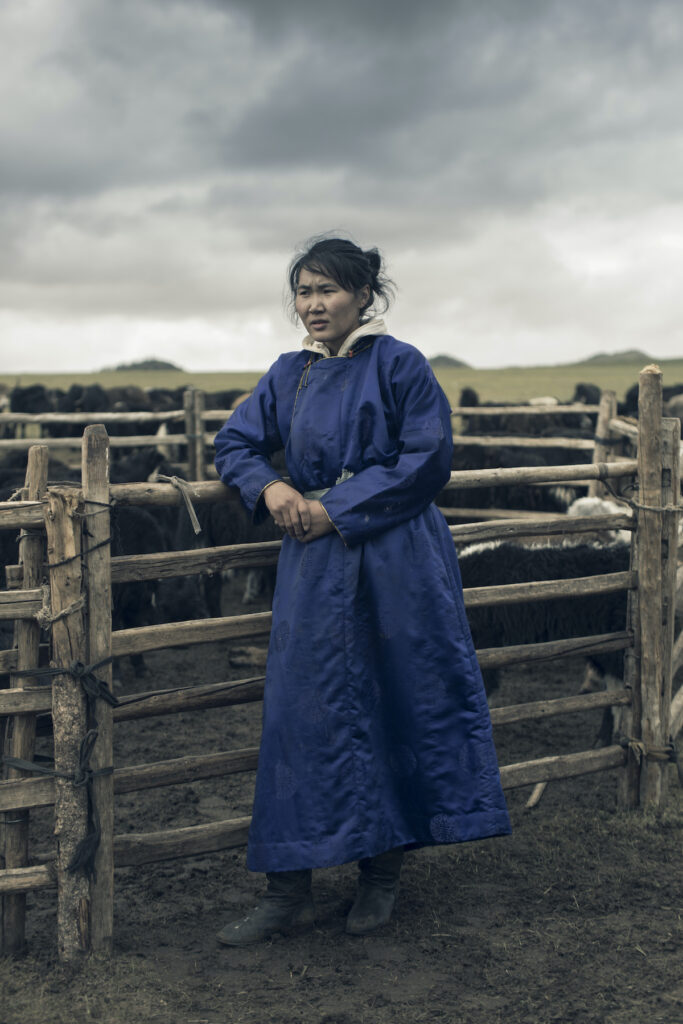
In terms of brand heritage, Tengri lives in a rather rarified atmosphere, how has your life story and Asian-American heritage influenced the Tengri brand?
My heritage, life story and the experiences these brought are fundamental to the purpose and vision of Tengri. My family, ethnic Chinese, were among the tens of thousands of refugee families who fled by boat as a result of the Vietnam war. By 1977, many countries, including the USA, granted families asylum status. My mother (heavily pregnant with me), my father, older sister and uncle were airlifted from a Malaysian refugee camp to Los Angeles. A few months after they arrived, I was born in a hospital on Sunset Boulevard. I describe my early existence as being much like the fashion industry’s supply chain: product origin – China, produced in Malaysia, made in America!
I was introduced to the murky underbelly of fashion’s supply chains and social exploitation at a very early age. Downtown Los Angeles, a hub for manufacturing, was where many garment factories were illegally set up, hiring undocumented Mexican immigrants and newly arrived Asian refugees. With the influx of refugee families in the late seventies and eighties, the perfect conditions were created for exploitation to fuel the hungry appetite of the fast fashion industry in America. At the age of four, I would join my mother where she worked tirelessly to support us in an illegal sweatshop. My memories of this time, despite the dark undertones, are happy ones. I mostly remember running around a maze of clothes and it was quite fun being around the women in the factory. As a kid, it was nice to be part of something. I felt so important – my role was to check the hangtags, and with my tiny fingers, make sure all the buttons were in place. I was given a small pair of scissors to cut any loose thread hanging out from the seams or from the buttons. I liked ensuring all the little details were tended to at the very end of the production line. My time at the factory came to an end the following year as I started school and began my education.
Fast-forward to 2013 and to see first-hand the raw pain and struggles of a young family in Mongolia, saving for their daughter’s future education, and knowing that this little girl would never be able to get the same education nor enjoy the opportunities I had, just because she was born in Mongolia, struck a poignant chord. Mongolia is the world’s second-largest supplier of luxury fibres, with nomadic herder families supplying the world’s top luxury fashion brands. Their work contributes to a €9 billion global cashmere market and yet the families are still living on subsistence wages of around £1 per day.

Did you seek any seed funding when setting up or was this as is usually the case, pouring one’s own sweat and financial equity into the foundations?
I invested my life savings in the first purchase of fibres made on that first visit and in the initial foundations of the business. Growing from that point we secured a number of private investments direct with our clients. Tengri is much more than a label and our customers have been integral to our journey and our story. Our clients deeply connect with our philosophy, from what they wear, to where they sleep, and to where they travel – the Tengri way!
You have a background in non-profit, what was it like to enter the luxury fashion market where profit margins are often put before people?
It’s for these very reasons Tengri was formed. We’re a social business, whose profits help to empower indigenous communities and our values run through every area of the business. We’re committed to building a future that preserves cultural heritage and empowers its workers regardless of circumstance, age, ethnicity or sex, not just within the Tengri sphere but to inspire, educate and make significant change industry-wide.
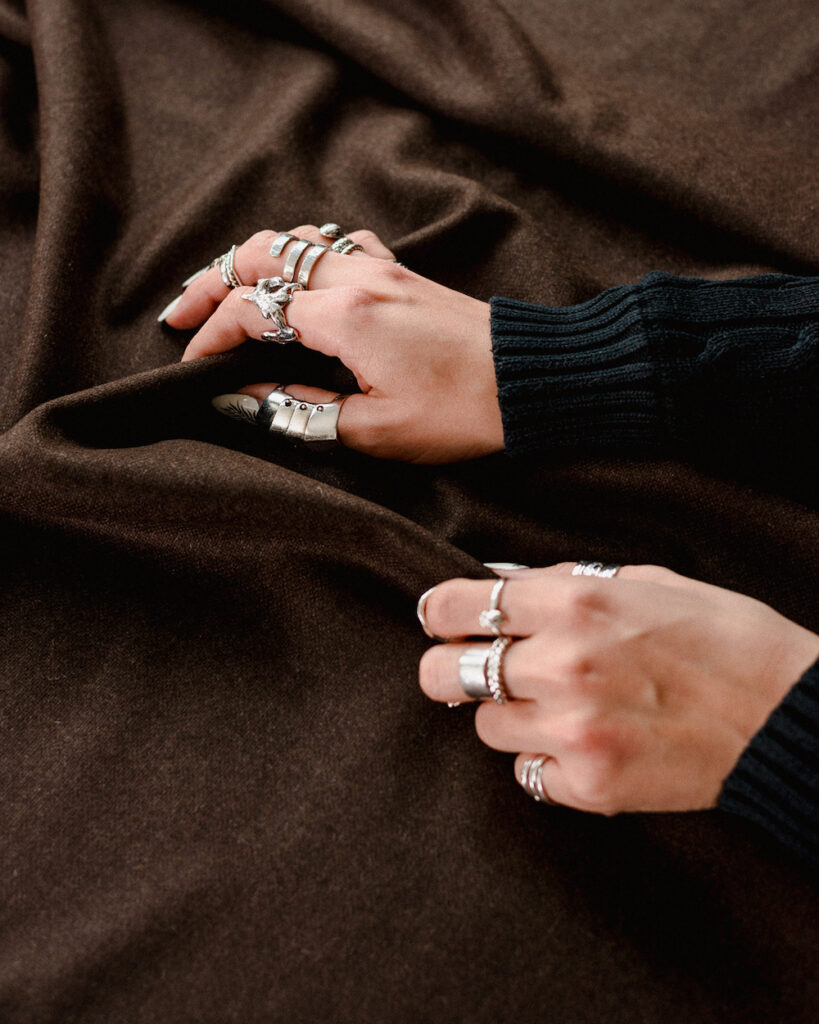
Can you outline Tengri’s supply chain model?
Buying fibres direct from nomadic families means traceability is built into the start of the supply chain. Most companies buy finished parts, such as yarns and fabrics, but this makes supply chain transparency impossible. At Tengri, we work directly with 4,500 herder co-operatives and there is no middleman. Our fibres are hand-combed from the underbelly of each baby yak once a year, in the spring when the yaks shed their winter coats. On average only 100 grammes of fibres are available from each yak. I personally work with the herder communities and manage the first stage of processing before the fibres are exported direct to us in the UK.
The second stage involves heritage craftsmen and manufacturers in England, where skills are passed from one generation to the next to create yarns and fabrics. The production process and manufacturing journey is a big part of the sustainability picture. At Tengri a key part of our work and manifesto is the preservation of heritage crafts and processes. Our manufacturing takes place in the UK, supported by young graduates coming into the industry, as well as skilled workers with more than 50 years’ experience in the textile industry from heritage woollen mills in Yorkshire and Scotland. We’re committed to building a business that preserves cultural heritage from east to west and empowers its workers regardless of circumstance, age, ethnicity or sex.
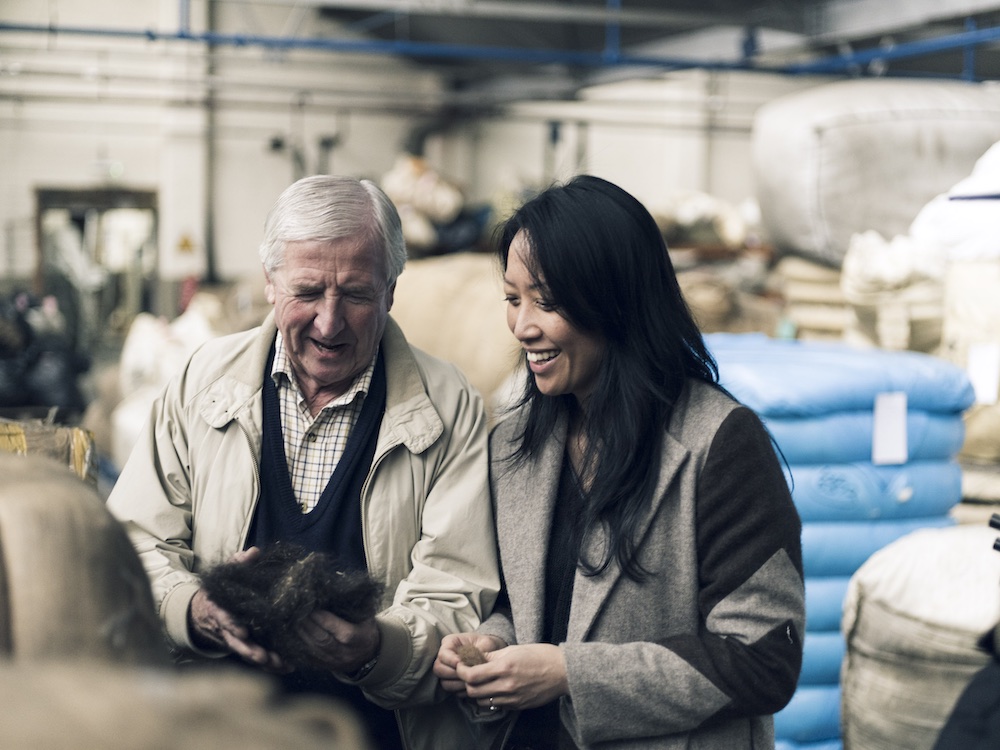
Luckily the trend towards fast fashion is dissipating, how are you championing slow fashion outside of Tengri?
There is still a very long way to go within the industry. While brands are now aware of what needs to be done and consumers are armed with more knowledge and power, we still see a lack of credible claims and supply chain transparency. It’s a fundamental switch in mindset working from the very foundations of the business, and I’ve collaborated with some of the UK’s leading creative and academic institutions for many years to support and develop their sustainability programmes in education, working closely with the next generation of designers and industry talent. In 2018, we launched our own innovation award to encourage the implementation of sustainable processes, looking forward to a more sustainable industry standard for the future.
Between writing Tengri’s business plan on the back of a chocolate wrapper all those years ago, what changes have you seen in the fashion industry and how has this influenced Tengri’s strategy?
While the conversation on righting the wrongs of the fashion industry is loud and there are, without question, positive steps being taken, we are a long way from seeing meaningful change on a significant scale. Consumer awareness has enabled more empowered and considered choices but we need to see genuine and meaningful change at supply and source, reinforced by government policies.
At Tengri, our vision for a world where land, animals and people are cherished, nurtured and respected, and where sustainable and fair share business is the norm remains, and our strategy has really come in to its own, now more than ever. Through the Covid-19 global pandemic, the Tengri manifesto and business model has demonstrated exactly why the fashion and luxury apparel industry needs to change and adapt to a concept of interconnected communities. Sustainable practices, from transparent supply chains, sourcing direct from herders as part of a long-term partnership agreement, to working with heritage craftspeople, family owned mills and factories has, within our production cycles, had minimum impact. Fortunately, cases of Covid-19 in Mongolia were very low and had little impact on the nomadic communities Tengri works with. Combing of precious fibres from the Khangai yaks takes place just once a year and we had received our fibres from the herders’ last harvest in advance of travel and import restrictions.
In terms of production, working with small heritage mills and factories and skilled craftspeople, our collaboratives are also able to operate more easily within the new Covid-19 health and safety guidelines. Dictated by nature, the Tengri production cycle is exclusively slow, from combing to completion this is dictated by nature and involves the highest level of workmanship. We work with pre-order on limited editions, bespoke and made to measure and have continued to work through our commissions and orders. Many other companies have struggled and will experience delays to source fabrics as a result of the pandemic. I’m pleased that our way of working means we can also collaborate and support a wider number of industry partners, including Savile Row tailors and a select number of luxury brands.

What defines a noble yarn and how do you price something of such significance?
Noble fibres is a term used in the textile industry to describe fibres sourced from rare animals. When spun into a ‘noble yarn’, it’s so named for its rarity, superior quality and performance. Khangai Noble Yarns® and fabrics have incredible natural properties, as soft as cervelt and vicuna, hypoallergenic, water-resistant, warmer than merino wool and thermal-regulating. At Tengri we use ‘noble yarns’ with a double-meaning. It defines and supports all aspects of the brand. The term ‘noble’ is used by us in the traditional definition to describe something that is ‘honourable’, ‘generous’, ‘splendid’ and ‘of high rank’. This is relevant also to our business model where sales of products have a direct and positive impact on people, land and animals, achieving a higher purpose. In terms of pricing, this is dictated by provenance, rarity and craftsmanship. You will see, as an example, that our ‘silver’ fibres and cloth are a significantly higher price point and this comes down to the rarity of that fibre grade.
I understand that Tengri means Sky God and the use of the word carries with it an incredible responsibility. How does one go about adopting such a prodigious name?
Yes! The word ‘Tengri’ means a pantheon of sky gods that govern human existence and natural phenomena on earth. When you travel through Mongolia, you’re beneath its endless blue skies with blue ribbons around trees, rocks and other spiritual places, honouring these deities. I wanted the name of the company to reflect Mongolia and as a name, it just felt right. When I asked the nomadic families for their thoughts, they gave me their blessing and asked me to ensure that everything I do is done in the highest honour, and I have done this to the best of my human capabilities, from design and execution of the business to our products.
There have been many serendipitous moments along my journey, and I continue to say that the heavens are looking down on me, for which I will always be grateful.
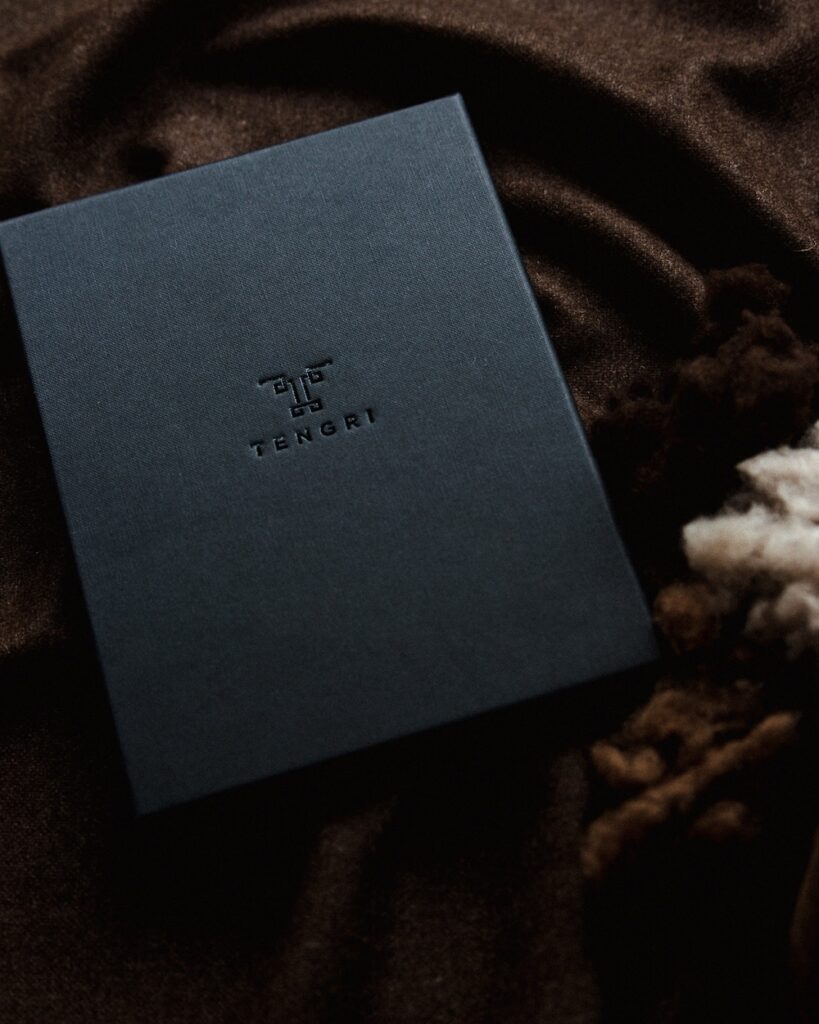
How has Tengri influenced Mongolia socio-economically and can you speak to the impact on the herders to date?
Tengri now works with over 4,500 nomadic herder families (rising from 1,500 in 2014) with a fair share business model, not only significantly increasing income with transparency but enabling communities to establish their own co-operatives and land rights.
According to the United Nations Development Programme, as much as 90 percent of Mongolia is fragile dry-land, under constant threat of increasing desertification. Conservation biologists have found that unsustainable levels of grazing by non-indigenous cashmere goats and other environmentally damaging livestock has consumed up to ninety five percent of forage across the Tibetan plateau, Mongolia and northern India, leaving just five percent for wild animals to graze. It’s no coincidence that in the last 70 years, temperatures have risen almost three times faster in this region than the global average.
We were one of the first UK companies to take the UN’s Business for Biodiversity Pledge in 2016 with our work to introduce fibres that support fragile ecosystems. Mongolia’s indigenous Khangai yaks enable biodiversity to thrive more effectively than non-indigenous and domesticated animal species. Living sustainably in the ecosystem, the Khangai yak graze softly, and unlike non-endemic animals, don’t tear grassroots from the ground. Their large hooves cause much less damage to the terrain, allowing plants and other wildlife to regenerate and thrive.
Forty percent of Mongolia’s three million people depend on herding. Nomadic herders in Mongolia maintain the traditional lifestyle of their ancestors, moving between four seasonal rangelands to provide good pastures for their livestock throughout the year. This method of livestock keeping is in symbiosis with the fragile ecological environment of grasslands in the Central Asian Plateau and critical to biodiversity. Tengri’s business model has enabled this collective organisation, allowing herders to establish a land-use agreement with local government, protect their traditional user rights and become stewards of the land.
We own and enable 100 percent transparent supply chains that cause no environmental harm and create positive social impact. Khangai yak fibre is now seen as a commodity, where before their animals herded for sustenance alone. Just last year I was approached by the co-operatives to activate the Tengri business model for herders of Khangai camel as a result of our success!

Did you have a shorthand list of brands you wanted to work with in the early days and who were your early adopters?
It was about working with brands who share our mindset. When we started we had curated an inspired team of collaborative designers and heritage craftspeople who shared our sensibilities. Our earliest collaborations saw an invitation to take part in Selfridges ‘Material World’ retail platform, where we were selected as one of their brightest innovators in materiality and provenance of fabrics – the ambassador for ‘Luxury Fibres’. We later joined forces with prestige bed maker Savoir Beds, introducing a limited-edition bed and topper filled with our noble fibres. It’s called The Khangai No 1 Savoir, offers the ultimate in sustainable luxury and can also be experienced in the Royal Suite at The Savoy!
Tengri has become a significant influence in the world of bespoke tailoring, how did the journey start?
Since my teenage years rocking around LA, absorbing a melting pot of stylistic references from punk, hip-hop to the nostalgia of Hollywood golden glamour, I’ve always been fascinated stylistically by menswear – the heritage, the details, the stories, the socio-political influences on style and garment structure. We launched with knitwear and coats, developing cloth in an essential progression to tackle head-on the interconnected links between fabric production, environmental damage and climate change. Beyond the high street and luxury fashion houses, the tailoring industry needs to be encouraging the transparency of cloth provenance and taking responsibility for environmental relationships in the process.
So where did we start? The heart of British tailoring, on Savile Row, influencing the way men have dressed for over two centuries. Our first entrance to The Row was with Huntsman, where we created an exclusive series of cloth, made with our rare noble fibres from the Khangai yak. With Tengri cloth, we are enabling a garment that is so much more than an item of clothing, it bears provenance, a story, a rarity with exquisite natural properties and in the knowledge that clients are investing in the preservation of people, land and animals.
We are now dressing clients via a number of influential tailors in the UK and across the globe including Huntsman in London and New York, Michael Browne and La Bowtique, the master of bow ties, creating the icing on the cake. For us it’s about exquisite sustainable solutions in the life of our customer, from bed to boardroom, meeting to mountain!
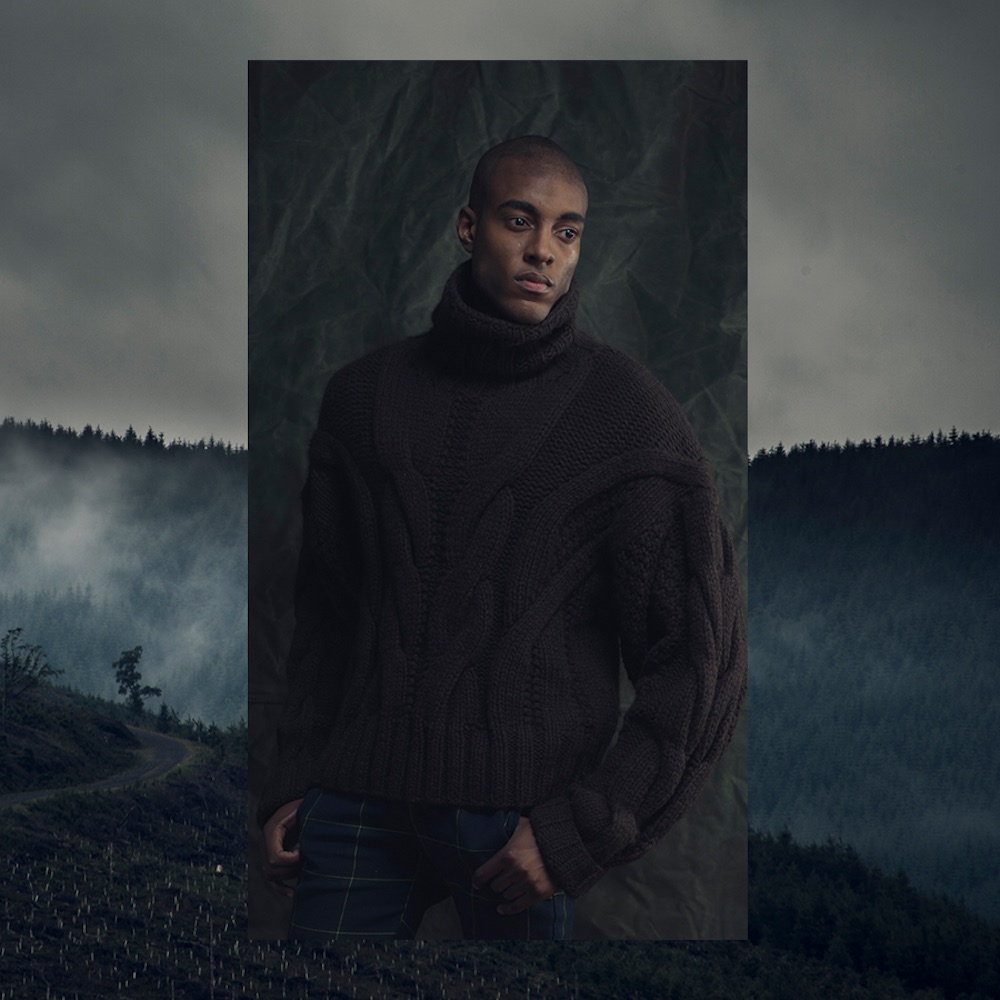
How does Tengri fit in to the changing face of tailoring, and the evolvement of some of the world’s most prestigious heritage institutions?
There is certainly a new energy in tailoring and especially on The Row, even pre-pandemic. Changing profile and new generations of clients, a shaking up of the institution, where we’re seeing more daring collaborations. The sartorial client continues to seek out rare elements for their pieces – exclusivity and social currency are a growing influence. We are enabling tailors to offer clients a cloth that is fundamentally making a difference and having tangible positive impact both socially and environmentally, with that all-important story of provenance. The Tengri client doesn’t invest in the cloth without investing in its narrative, from the steppes of the Khangai in Mongolia, the emotional journey that travels with the herder families and the unique natural properties and performance as a result of the incredible endemic animals that grow the fibres for their bespoke garments.
Can you tell us more about Tengri’s fabrics and how these have been received?
The Khangai Limited Edition Fabrics are woven from Tengri’s rare Khangai Noble Yarns, and so benefit from the exquisite natural properties I referenced earlier. On arrival in the UK, the yarns are woven at a heritage mill in Yorkshire, with traditional skills in textile manufacturing dating back to 1777. Fibres are processed in the soft water of the Yorkshire Pennines, a natural ingredient and unique aspect of the Huddersfield textile weaving industry, which supports the unique properties of the cloth, resulting in a distinguished and luxurious handle. To finish, the cloth is brushed with the fibres of wild harvested teasel plants and delicately steamed to refine texture and drape. From combing to cloth, the development process for our fabrics can take up two years in a process combining creative artistry, science, the purest raw fibres and finest yarn construction.
The reception to our fabrics continues to humble me, from manufacturers, weavers to bastions of industry. I’ll never forget the look of excitement from Campbell Carey and the rest of the Huntsman team when the water beaded off a sample of our rarest silver cloth to demonstrate the unique water-resistant properties of the natural fibres! Some of the world’s most talented cutters have likened working with Tengri cloth to ‘cutting into butter’, described as having the luxury qualities you can ‘hear and feel on the scissor’. I’ve also received enquiries simply from images, where those in the know can identify visually the unique drape and superior qualities of our fabrics without touch!
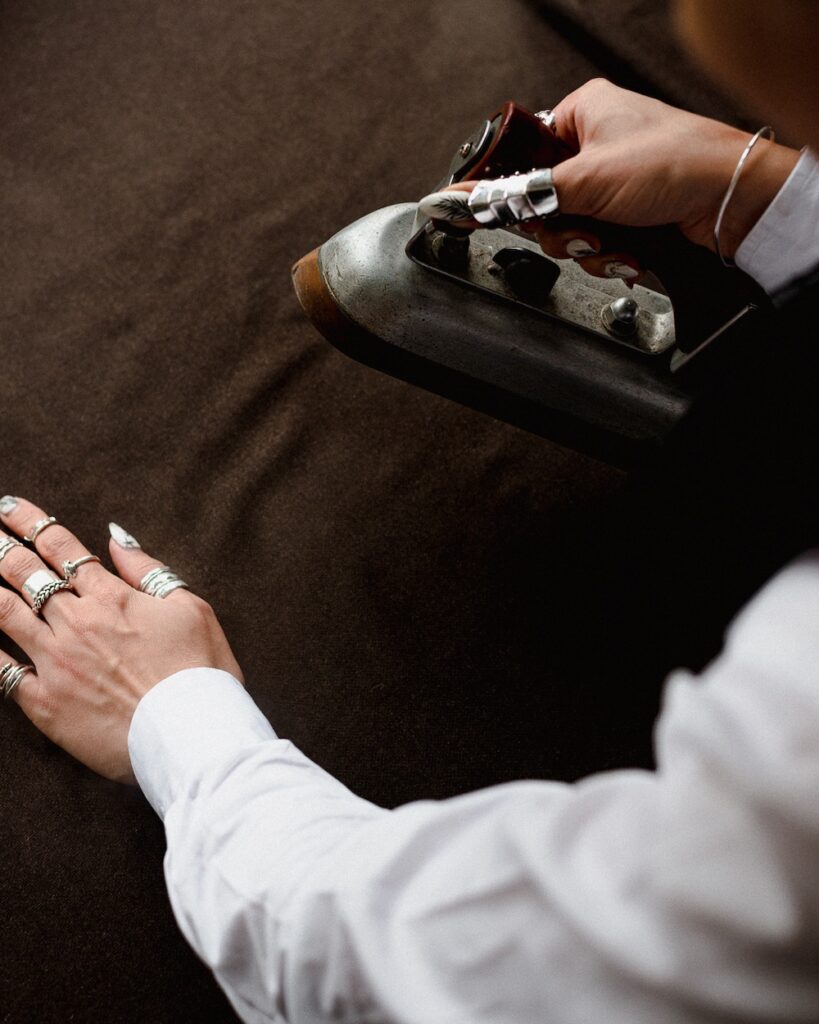
Could you explain how the Tengri Innovation Partnership started and what kind of influence it has had so far?
We launched the Tengri Innovation Partnership and award in 2018, a key element of the Tengri manifesto, working towards a society where sustainable and fair share business is the norm and the status quo of the fashion and textile industries is disrupted. Its aim is to introduce transparent and sustainable materials and production into design-thinking for emerging designers, who in turn will craft and create a more sustainable future. The alliance works to embed systems-thinking, circular design and sustainability into education and practice, nurturing and rewarding innovation and empowering young talent to drive market change. The partnership comprises a global network of organisations spanning private sector, research, conservation, NGOs, charity partners and governments, committed to working collectively to foster catalytic change and shape a better future. Winners are provided with a year mentorship and six-month paid internship with Tengri. We’ve seen some exceptional talent through our doors and are extremely proud to be supporting the designers of our future challenging the industry of tomorrow.
Have you found that your customer appreciated the very transparent nature of your production process? And do you think this should be the future for any luxury fashion brand?
This is exactly why Tengri exists and what sets us apart. We offer a very special ingredient to our clients who engage very deeply with our philosophy, from what they wear, to where they sleep, to where they travel – the Tengri way! Every luxury brand is now fully aware that this is what should be offered, but the reality is such that unless their operation is built with these principles at the foundations, it’s a challenge to offer transparency with true authenticity.
As opposed to many contemporary, “hype” luxury brands, Tengri doesn’t seem to focus on creating demand for its products through the use of “namedropping” and overt logos. Could you elaborate on your definition of luxury? And do you think this approach to luxury could benefit the cycle of garment production and its heavy impact on our planet?
First and foremost, we believe that luxury must not come at an expense to people, animals or the planet. Tengri is about quiet luxury. As a brand we put our values first, and have nurtured provenance and authenticity, working towards an enduring brand. Our clients are very much part of the Tengri principal of interconnected communities and we communicate through those communities which resonates with the Tengri customer.
My definition of luxury? Luxury is subtly elegant, natural, rare, unique and intangible. I define luxury as something that is enduring, comes naturally, feeds the soul and represents the pinnacle of humanity, so yes, this approach intrinsically slows the pace, paving the way for more considered production and supply chains.
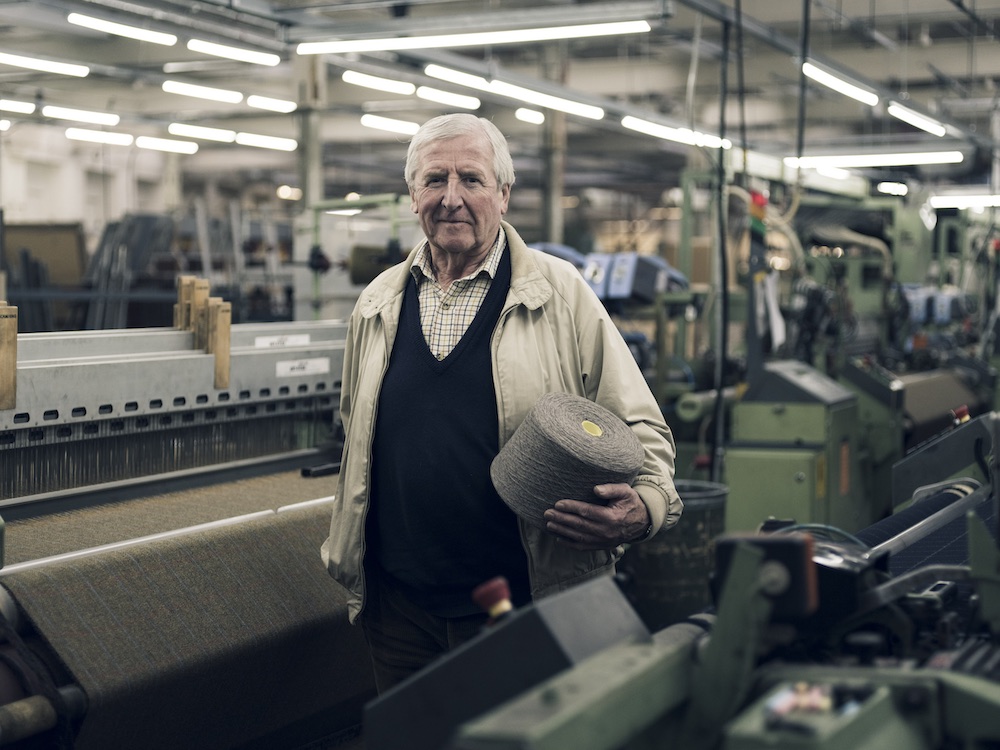
Recently, you were awarded part of the Business of Fashion, Textiles and Technology Creative R&D Partnership fund. In what way do you think the market of luxury fashion could benefit from your use of technologies, and specifically from the combination of contemporary techniques with age-old materials?
Yes! We were honoured to be recognised as one of the UK fashion industry’s top ten innovative and sustainable brands. With the incredible support of the University of the Arts London, we are working to explore the commercial potential of the unused grade of fibres from the Khangai yak, working towards educating the market about the rare properties and capabilities of byproduct fibres, while managing the perception and application of ‘bio-waste’ within the industry. A staggering 70-90 percent of yarn byproduct fibres remains unreported in the supply chain. These are created at the start of many luxury fibre textiles supply chains in developing countries, and this has simply got to change.
In developing the yarns and fabrics for Tengri, I also discovered some of the last unique heritage weaving mills and spinning manufacturers in the UK, the manufacturing skills and machinery are at risk of dying. Without continued education to develop the next generation of skills to work these machines, a long-term commercial partner, these small family owned manufacturers and machines will be sold and exported. The talent needed to maintain the industry also needs to be nurtured as part of a legacy planning. It’s so important to protect the heritage skills and manufacturing in the UK, the epitome of luxury craftsmanship. The Tengri brand and business model is about supporting protecting culture and heritages from east to west.
Can you expand on the Khangai Experience and is there any room left on the plane?
The Khangai Experience charts the root of the Tengri story in a carefully curated trip through the Khangai Mountains, a remote region of Central Mongolia, 500 kilometres west of the capital of Ulaanbaatar and home to the ancient Khangai yak. Guests are guided by me and joined by expedition chefs, wildlife trackers and my local connections fostered over my time travelling to Mongolia. We invite members of the Tengri community, from clients, industry partners to investors, to see first-hand exactly what inspired me to start the business, to meet the herder families, experience the land, the wildlife the nomadic way of life. The trip not only supports conservation but also aims to challenge us and reconnect us to people, land animals and place. Days are spent in the Khangai Mountains with the indigenous herding families, my guests can expect to forage for wild growing foods, learn to herd and milk yaks, and navigate using only the stars and the sounds of the river as a guide. Evenings can be spent with local families, sharing knowledge over yak milk vodka with meals prepared by an expedition chef. We sleep in Gers furnished in the ‘Tengri Way’, with locally-sourced Tengri bedding. We also work prior to the trip to tailor bespoke Tengri expedition clothing for our clients.
What does the future have in store for Tengri? What role will the house play in the fashion industry moving forward post-Covid?
It’s a challenging time for the industry which has catapulted an already powerful shift in consumer trends. There’s a new luxury consumer making ever more considered investments and consumer purchases, and the Tengri Way provides an ethical, confident solution. This not only direct to consumer but with a model that enables our partners to future-proof their business via transparent supply chains.
We’re working on a number of exciting developments. Our R&D work will continue to push the boundaries of globally sourced ancient fibres, developing innovative yarn blends, and we’ve recently added to our noble fibres and fabric collection with the launch of Khangai camel for the fashion, tailoring and interior design industries. Our strategic collaborations will enable luxury brands to operate more consciously with 100 percent transparency, working towards an equitable future that re-connects people, land and animals.

